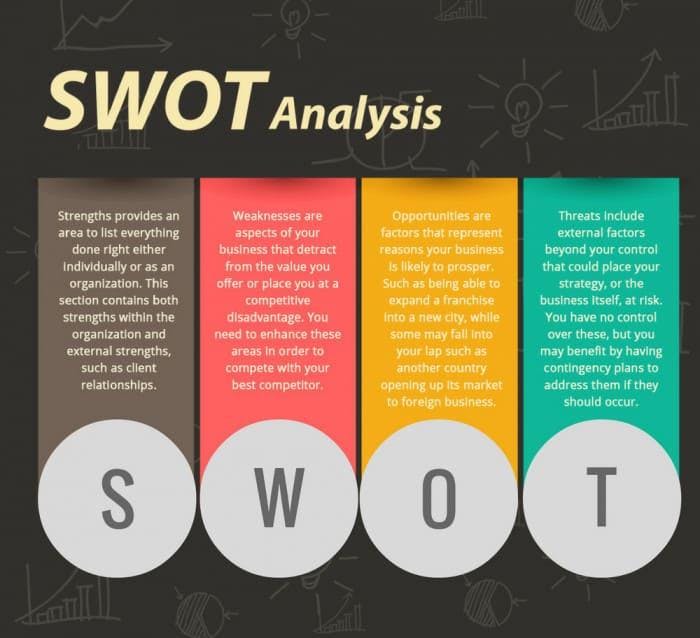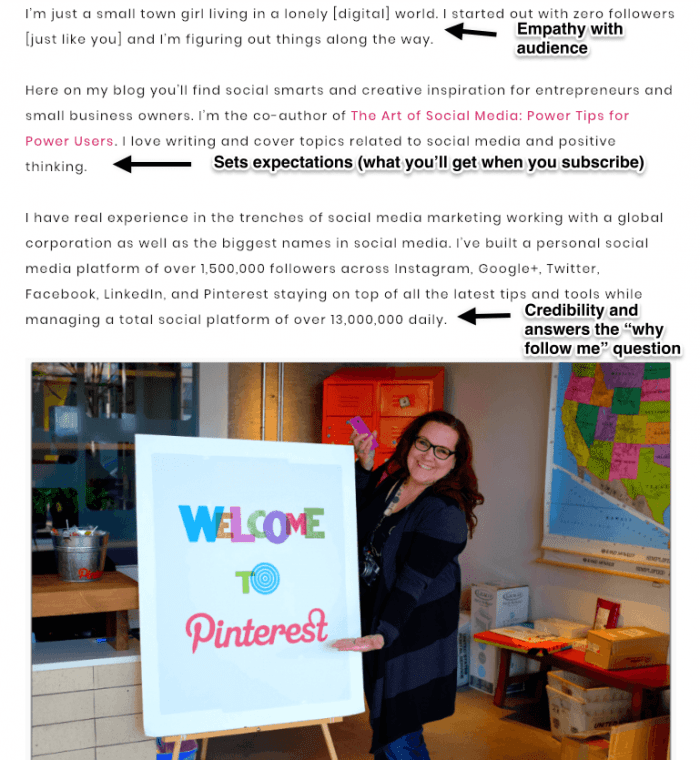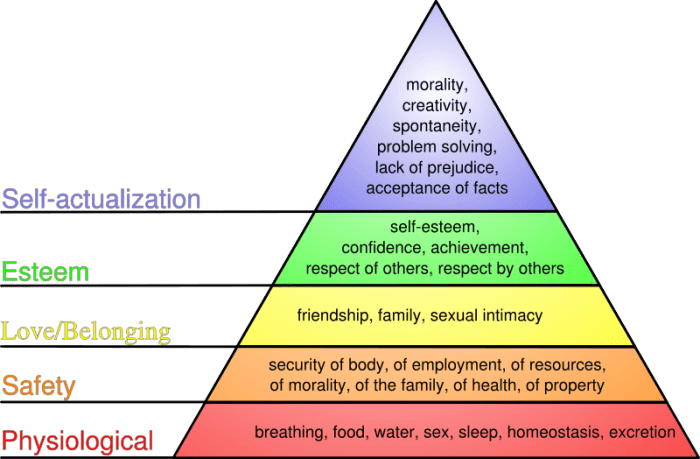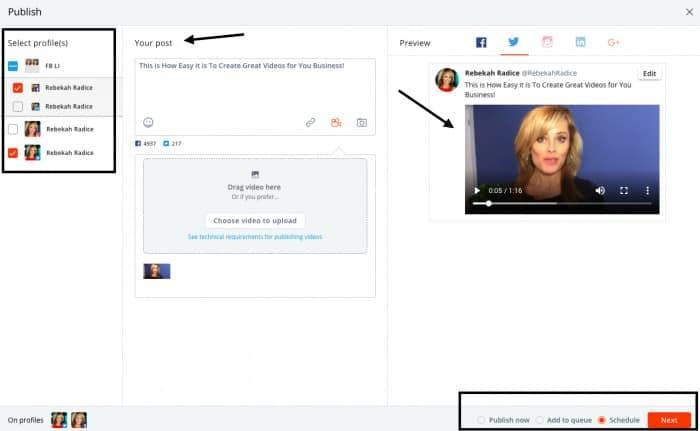Does your video content captivate and engage your social media audience? Is it entertaining, educational, and igniting conversation?
With 84% of consumers saying they've purchased a product after watching a video, video content marketing is no longer a maybe, but a must-have for your business.
But I get that creating video content isn't always easy. From ideation to the tools you use, knowing where to get started can leave you feeling stuck. That's why I'm sharing my video marketing process in this episode of the Brand Authority Podcast. In a few short steps, you'll create high-value marketing videos to add to your social media strategy.
Subscribe to Brand Authority Podcast on iTunes
Highlights from episode 29
Step 1: Video content brainstorm
Before you fire up your camera and begin creating videos, you need to work through topics. What will you talk about, what problem will you focus on in each video, and what's the solution you'll share?
You also need to get crystal on who you are, what little slice of genius you bring to the world, and how that solves your customer's biggest problems. The questions I've designed below will do exactly that. They'll help you to identify:
- Your specific expertise
- Your key differentiators
- Your unique solution
Once you answer these eight questions, I'll show you how to take each one and turn it into quick and easy branded video.
BONUS 1: Each video plays two roles:
- Helps you get found by search engines based on specific keywords and phrases
- Answers the most frequently asked questions that your perfect customer is typing in search, asking on social or requesting from Siri
BONUS 2: As you're working through all of these questions, your answers won't just show up in your videos, but also in your About page, social media bios, and company marketing collateral.
1. What qualifies you as an expert in your industry?
If I asked you what you've accomplished within your business, would you immediately rattle off a bunch of awards? While awards are terrific credibility (and ego) boosters, they don't provide enough context as a standalone. A better approach is to share your background, skills, and expertise in short, bite-sized stories. This will help you to:
- Craft a narrative around your brand
- Give your audience the information and inspiration they need to self select into your product or service
In other words, make your audience the hero of the story... not you. GoPro is a great example of that in action. The audience is front and center.

A post shared by GoPro (@gopro) on Jan 18, 2019 at 9:59 am PST
2. What do you do better than anyone else?
When someone works with you, what are they getting in return? What is it that makes them choose you over the competition? Sit down and write the top 3 words that describe your skills, talent, and expertise. Here's a quick list of strengths to give you an idea of where to begin:
- Actively collaborates
- Complex problem solver
- Deep business knowledge used for competitive advantage
- Excellent customer service
- Enthusiastically tackles challenges
- Highly optimistic
- Leader in product innovation
- Profit, revenue, and metric focused
- Strong company culture
- Tremendous work ethic
If you're struggling to come up with something on your own, get feedback from your customers, family, and close friends. You can also use the SWOT method to break down strengths as both a company, team, and personal brand.

Source: HubSpot
3. What proof do you have that you're better than the competition?
As humans, we all connect on different levels. A person who's conventional and grounded will want to learn about your school history, where you graduated from, the awards you've won, and certifications earned. A more emotionally connected person will want to learn about those things but as a story like I mentioned above. You'll share those details but in a way that connects them on a deeper, more intimate level.
Take Peg Fitzpatrick's "About," and see how well she's woven together a mix of personal details and business accolades. This speaks to both the conventional and emotional personality, showing empathy and establishing credibility.

Remember, a great story is one that earns the attention of your audience, pulls them in, and encourages them to learn more. The better you can speak their language, the more apt they are to listen, engage, and respond.
4. What needs are you satisfying for your customers?
To understand the emotional triggers of your audience, you only need to look to past behavior and a universal psychological truth. In Maslow's “Hierarchy of Needs," there are 3 basic emotional triggers that drive consumer buying behavior:
- Safety
- Security
- Sense of Belonging

Source: MBird
To appeal to these basic needs, take a look at your product and the experience you’ve created around it. What needs are you satisfying for your customers and what are you providing them with?
5. What are the three biggest problems you solve for your customers?
Now that you’ve determined the needs of your audience, it’s time to get specific about the problems you solve. Go back to the competitive research you performed. As you look to the conversations, content, and comments, what are those people specifically asking for?
For example, as a Realtor working with couples aged 35 - 55, you'd want to pay special attention to their stage of life, current living situation, and lifestyle.
You'll tie that to the they're facing. Such as, the 35-year-olds are just starting a family. They're looking to purchase their first home together and need something larger than what they're currently in.
In essence, their struggle is dealing with a space too small and one that doesn't allow them to achieve their dreams of expanding their family. You see, once you get inside the head of your viewer, it’s much easier to clearly identify the solution.
6. How did you become known or influential in your industry?
This is where you share your story. How did you start your company? How did you get to where you are?
7. How have you helped people already?
Here, you need to give examples of what you've already done for your customers. You can share testimonials or case studies that showcase how you were able to help people solve their problems.
Step 2: Create your video content topics
Now that you've answered those 7 questions, it's time to flesh out your topics. 🎉
Here's how this is going to work. You'll create 7 videos using your answers from above. And guess what? Each one of those videos is something you can use in a variety of ways, not just on social media.
Ready to dive into those topics? I've outlined how you'll map your answers to your first 7 topics. Each video has a title that directly relates to the questions you've already answered so it's easy peasy.
Video 1:
Topic: How to find the best expert (your industry).
For example, How to Find the Best Facebook Ads Expert. You can even add a bit more to that, something like (and avoid getting scammed!). You're doing two things here, answering one of your potential customer's biggest questions and immediately establishing credibility by sharing the top ways you can identify who the real experts are.
Video 2:
Topic: 3 essential skills any (your job/specialty) must have
For example, 3 Essential Skills Any Business Coach Must Have. Same thing as above, answering a FAQ and establishing yourself as the go-to expert.
Video 3:
Topic: Simple ways to know if (your job/specialty) is credible and trustworthy
Use your story here and provide 2-3 of your credibility factors. Express what your audience should be looking for when hiring, buying from, or connecting with a professional in your industry. This is your time to shine!
Video 4:
Topic: This is the biggest benefit to (working with/hiring) the right (your job/specialty)
If you're a Fitness Instructor, your topic might be, "This is the Biggest Benefit to Working With the Right Personal Trainer." Work to dispel myths, call out bogus claims, address self-limiting beliefs that hold your potential customer back, and express why this will help them:
- Move faster
- Achieve higher results
- Be better
- Learn more
- Establish proper habits
Video 5:
Topic: Why now is a great time to (do/get) XYZ
If we stick with the example of a Realtor helping a 35-year-old couple buy their first home, your topic might look like this: "Why Buying a Home Now is Great for Your Expanding Family."The goal here is to speak to their exact pain point, explaining how easy it can be achieved when they work with you.
Video 6
Topic: 3 Ridiculously simple steps to be a successful (your job/specialty)
Now you're going to own your skills and expertise. Share how you became an authority, what steps it took, and how that will benefit them. This isn't a time to be boastful or braggy, but honest, humble, and informative.
Video 7
Topic: Why your (target market) needs a (your job/specialty)
Let's say you're a social media manager that specializes in helping dental practices gain exposure. Your topic would be, "Why Your Dental Practice Needs a Social Media Manager." If you're a local business, you'll want to add those specifics as well. Make sure you're speaking as clearly to that audience of one as possible. Not sure what I mean by that? I wrote about it here.
3. Create your videos
Once you have your video topics nailed down, it's time to create them! You have several options as you create these videos:
Talking Head
This is your traditional, one-on-one video with you standing or sitting and staring into the camera. While this can be uncomfortable for some (ok...most!), there are ways to get more comfortable on camera. Justin Brown of Primal Video recommends that you:
- Practice and watch your video to positively critique
- Prepare to be confident in how you present your topic
- Get used to the sound of your own voice
- Pretend that someone is sitting behind the camera and asking you questions
- Get feedback on your videos from people you trust
Interview
Interview videos are a nice way to include someone from your team and use your topics above to create a conversation. Chase from Zacuto shares creative ways to make your interviews as engaging and professional as possible:
- Choose a space that has surroundings that helps tell the story
- Make sure there's sufficient space for you, the interviewer, camera, and lights
- Be prepared by composing your shot in advance
- Use the 3-point lighting approach
- Pick your audio source and split your channels
- Do a sound and audio test before you start shooting
Behind-the-scenes
This is the perfect type of video to turn viewers into loyal followers. Use them to share your process, the tools you use, a step-by-step, how-to or just give a glimpse into your day. The sky is the limit! Take a cue from Caitlin Shoemaker that took her viewers along from beginning to end of filming a recipe video.
Live streaming
Whether you're using Facebook, YouTube, Instagram, Periscope, or any other live-streaming platform, this is the type of video that you can use every day and in every way. And as Joel Comm shares, you can integrate tools to expand your options even further.
Presentation
This type of video is exactly what it sounds like. You take your topic, break it down into a few slides, and then add your voiceover. The beauty of this type of video is how easy they are to make. You don't need to take more than 30 minutes to drop everything into 5-10 slides, prepare your quick script, and hit record! If you're using PowerPoint, here's a quick way to record your slides.
4. Share your videos to social media
BOOM! Look how far you've come. Let's recap:
- You've answered some tough questions about you, your business, and your brand
- You've come up with video content topics
- You've determined which types of video you'll create
Now it's time to get those videos out into the world! I'm not going to break down a whole social media strategy because I've written about that a dozen times. I also broke it down into a daily social media checklist.
Here's your quick video launch checklist to get your videos on social media:
- Optimize your title and save the video based on keywords for your particular topic. This is just like a blog post title. Make it compelling, intriguing, and written with your audience in mind.
- When you upload, use a keyword-optimized description. This is similar to a meta description you use on your blog. Short, to the point, and optimized for search.
- Upload and share to social media manually or add the video to a tool like Agorapulse where you can queue or schedule multiple times. I use this to schedule and test a variety of times and across multiple channels.

Final thoughts
One of the best things about creating video for social is that there are so many platforms to share it on and ways to repurpose. You can write a blog post and embed the video, and then share it on Facebook. You can create a snippet of the video and use it on Instagram.
However, you choose to disseminate that content and leverage social media is up to you! And hopefully, you can now see that coming up with video topics and then shooting those videos doesn't have to be hard. The most important tip here is to get out and do it. Decide on your first one and make it happen.
Subscribe to the Brand Authority podcast
People, brands and resources mentioned:
About Rebekah Radice
Rebekah Radice, co-founder of BRIL.LA, has traded narcissism for purpose. When not driving growth, you'll find her tricking family into thinking she's Emeril Lagasse - likely covered in marinara. The spotlight was fun, but impact is better. These days she's using 20+ years of brand brilliance for good.
